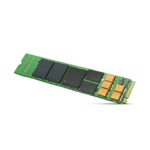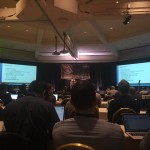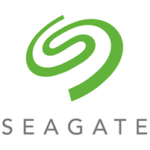Today Seagate unveiled a first-of-its kind, high-capacity drive that can help data centers more easily accommodate exponential data growth, while still maintaining high levels of computing power and performance. The two terabyte (TB) version of its Nytro XM1440 M.2 non-volatile memory express (NVMe) Solid State Drive (SSD) is the highest-capacity, enterprise-class M.2 NVMe SSD available today, making it well suited for demanding enterprise applications that require fast data access, capacity and processing. “This latest version of the Nytro XM1440 M.2 NVMe SSD is the first of its kind and pushes the boundaries for enterprises, so they don’t have to sacrifice speed for access and availability. They can continue to scale operations in an efficient manner and still get the most value from their data, but without the extra overhead.”
Interview: Seagate Powers Four TOP10 HPC Sites at ISC 2016
“So one of the things that we’ve really been very proud of, in terms of our progress, particularly in EMEA over the last 12 months, is we’ve deployed a number of really significant systems. If you remember when we were back together actually at SC15 in Austin. One of the big pieces of news that we were very proud of was our presence in the top 10, 4 of them are actually powered by Seagate. Even more impressive is that 100% of the newest systems are powered by Seagate. When you peel that layer back just a little bit further, actually three of those four systems are actually from Europe and the Middle East.”
Interview: Ken Claffey on Seagate HPC Innovation On Deck at ISC 2016
“One of the benefits of our ClusterStor modular architecture is its flexibility – we can deliver a very comparable performance with either Lustre or Spectrum Scale on the same extensible architecture. There are two key reasons for that balance of performance and flexibility. Firstly, we have a unique scale out storage architecture with a distributed processing model, meaning you’re not tied to a centralized legacy RAID controller hardware. Secondly, there is no proprietary hardware or RAID firmware in the system. All the software runs in a standard Linux environment, so we are able to take our software stack and it is really agnostic as to whether we are running with Lustre or SS.”
Interview: Women in HPC to Host Special Events at ISC 2016
This week, the Women in HPC organization announced a series of special events coming up at ISC 2016. To learn more, we caught up with WHPC Director Dr. Toni Collis from EPCC at the University of Edinburgh. “Most people don’t notice how un-diverse HPC really is. But when you start counting the number of women in the room, at the table, or in the C-suite, it is quite surprising.”
Video: Whither Hard Disk Archives?
In this video from the 2016 MSST Conference, Dave Anderson from Seagate presents: Whither Hard Disk Archives? The talk was part of a panel discussion on Data-intensive Workflows.
Video: Lustre Update from Seagate Technologies
Peter Bojanic presented this talk at LUG 2016 in Portland. “At LUG 2016, Seagate announced it will incorporate Intel Enterprise Edition for Lustre (IEEL), a big data software platform, into its market-leading ClusterStor storage architecture for high-performance computing. The move will strengthen Seagate’s HPC data storage product line and provide customers with an additional choice of Lustre parallel file systems to help drive advancements in the HPC and big data market.”
Live Report from LUG 2016 Day 1
“The Lustre User Group (LUG) 2016 conference is well under way. The morning of the first day was spent on looking at Lustre today and tomorrow and security developments in the code. Peter Jones and Andreas Dilger described what is in the newest release of Lustre 2.8 and will be in Lustre 2.9, targeted for release this fall, and beyond. These features include growing support for ZFS, security, multi-rail LNET, progressive file layouts, project quotas, and more.”
Seagate Adopts Intel Enterprise Edition for Lustre
Today Seagate announced it will incorporate Intel Enterprise Edition for Lustre (IEEL), a big data software platform, into its market-leading ClusterStor storage architecture for high-performance computing. The move will strengthen Seagate’s HPC data storage product line and provide customers with an additional choice of Lustre parallel file systems to help drive advancements in the HPC and big data market.
Video: Seagate Exascale HPC Storage
“Traditionally, storage have been using brute force rather than intelligent design to deliver the required throughputs but the current trend is to design balanced systems with full utilization of the back-end storage and other related components. These new systems need to use fine grained power control all the way down to individual disk drives as well as tools for continuous monitoring and management of these systems. In addition, the storage solutions of tomorrow needs to support multiple tiers including backend archiving systems supported by HSM as well multiple file systems if required. This presentation is intended to provide a short update of where Seagate HPC storage is today.”
Seagate and LANL to Heat Up Data Archiving For Supercomputers
Seagate Technology and Los Alamos National Laboratory are researching a new storage tier to enable massive data archiving for supercomputing. The joint effort is aimed at determining innovative new ways to keep massive amounts of stored data available for rapid access, while also minimizing power consumption and improving the quality of data-driven research. Under a Cooperative Research and Development Agreement, Seagate and Los Alamos are working together on power-managed disk and software solutions for deep data archiving, which represents one of the biggest challenges faced by organizations that must juggle increasingly massive amounts of data using very little additional energy.












